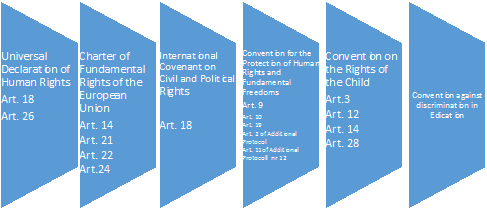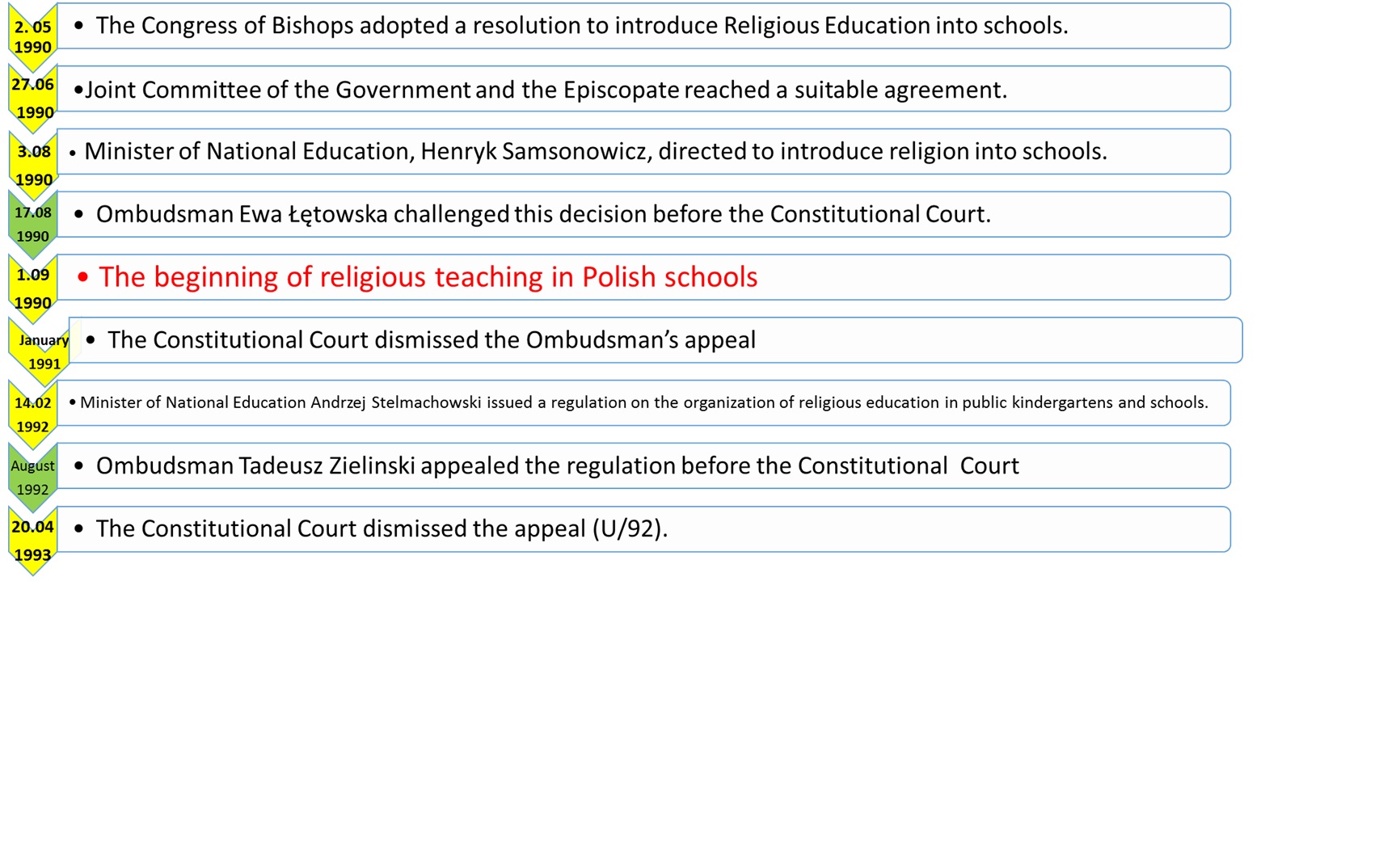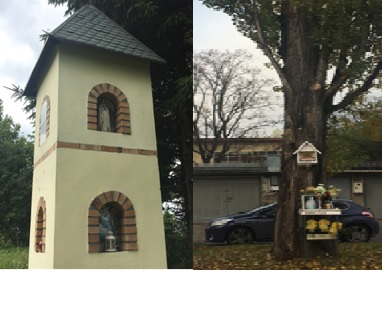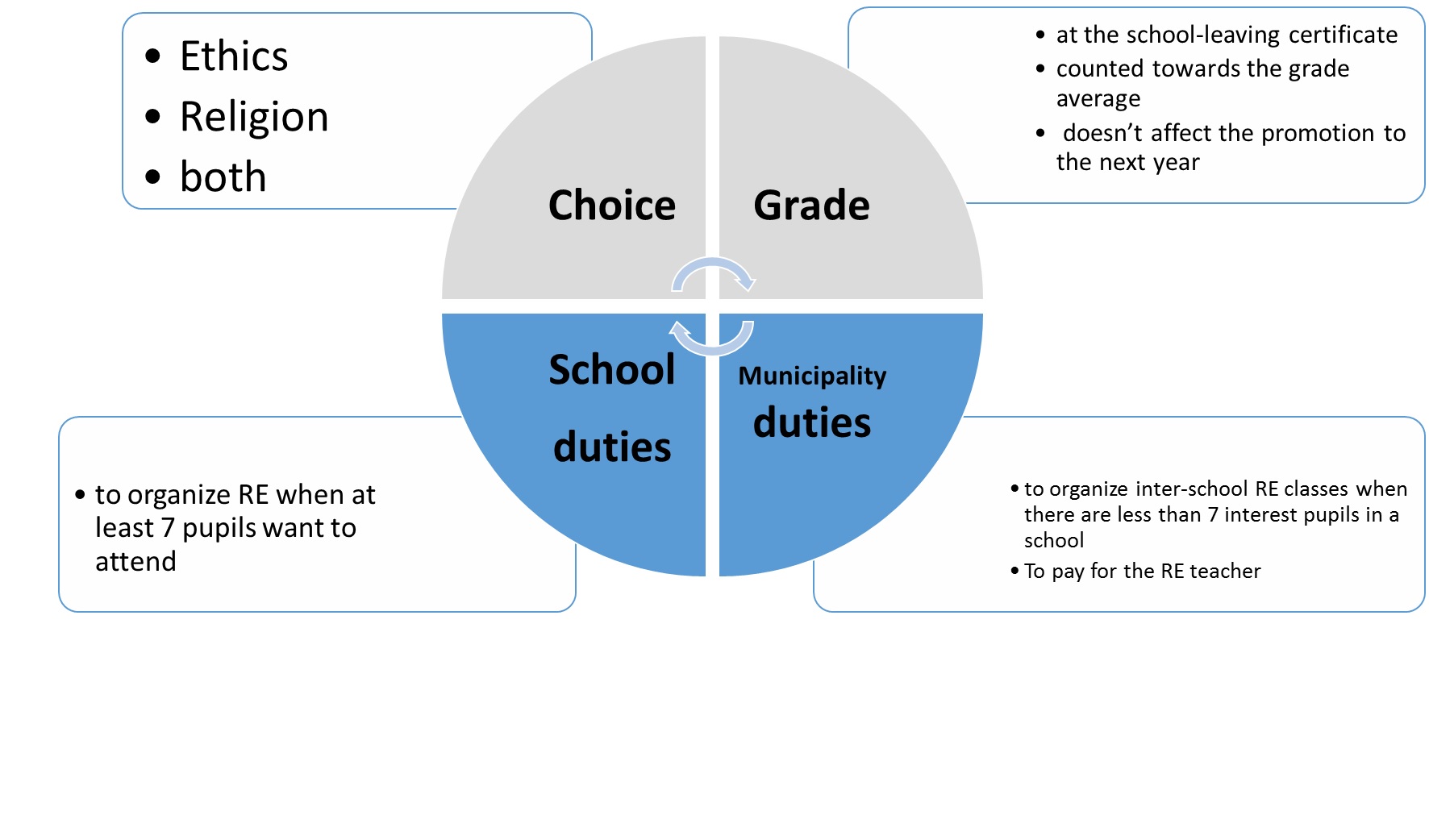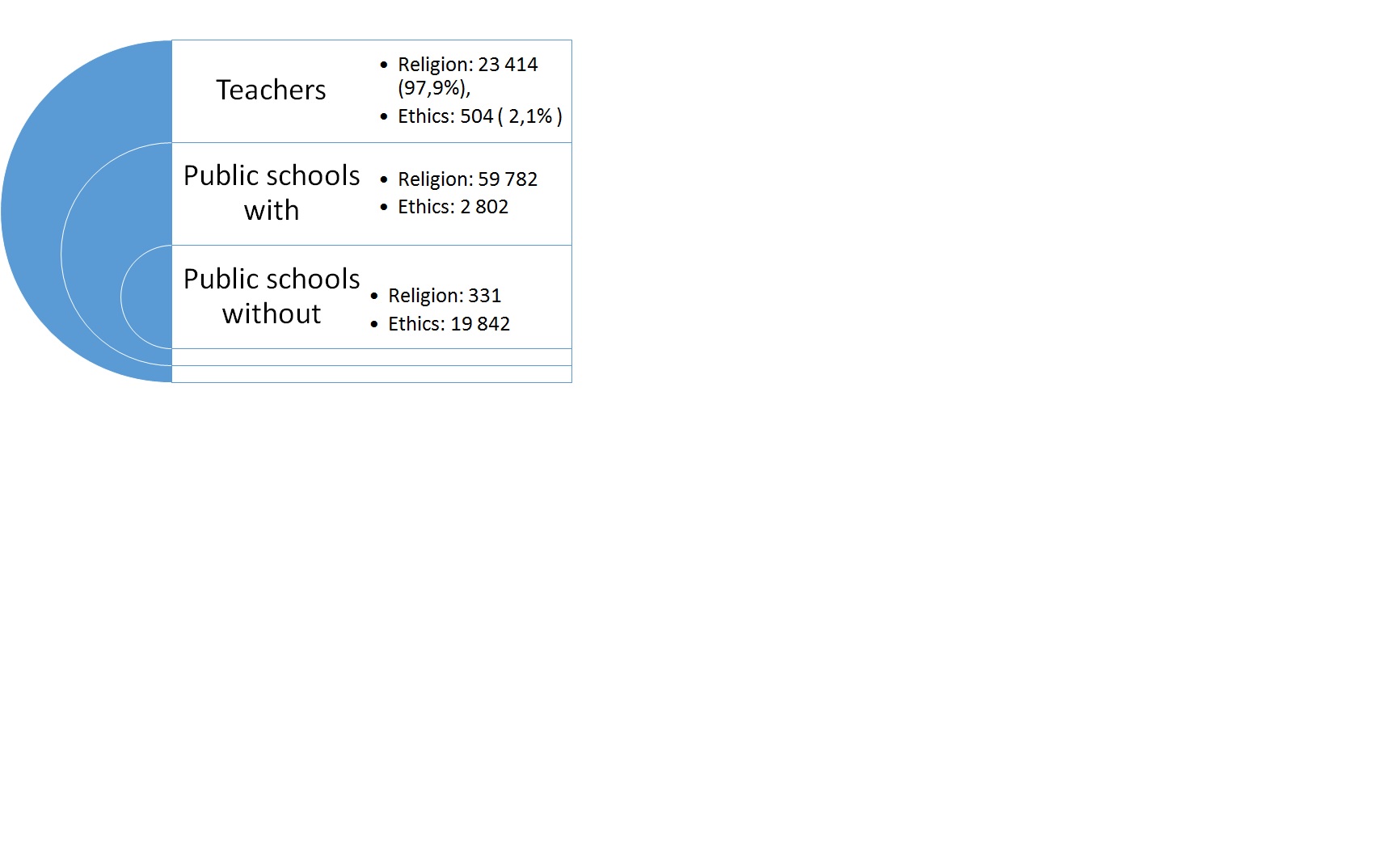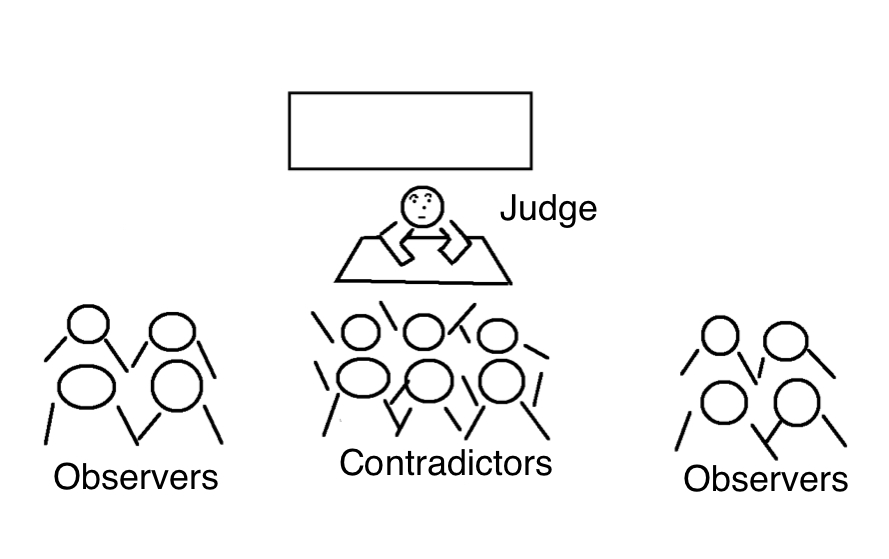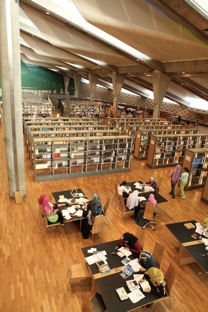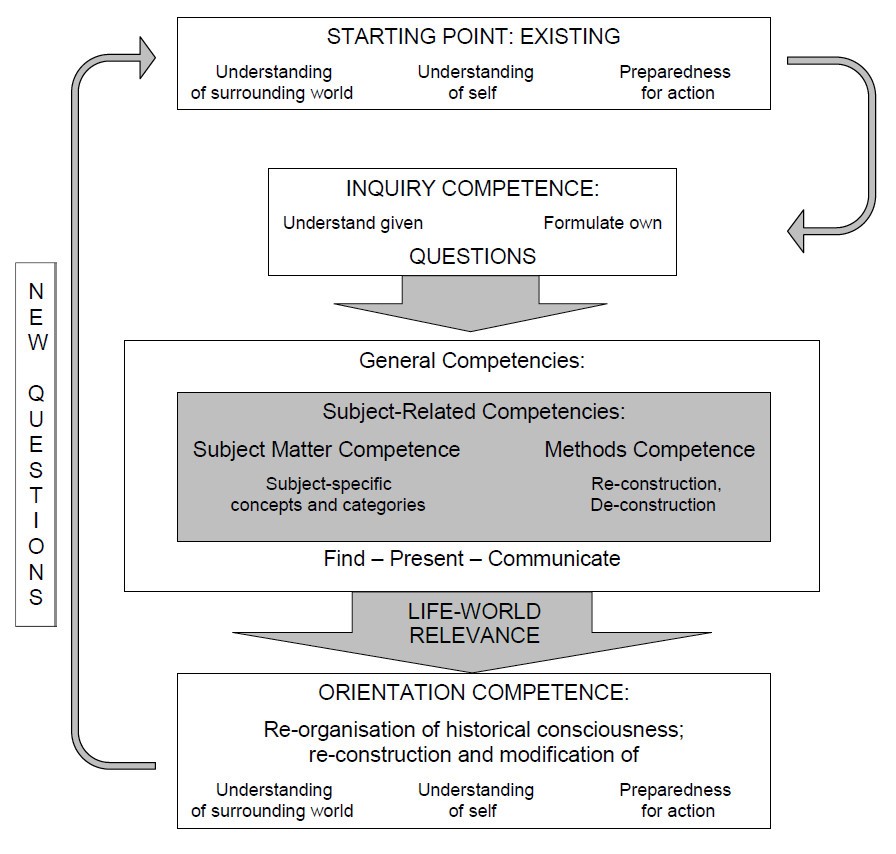Introduction
The current challenges in the so-called Anthropocene[1] age seems insurmountable and has led to disastrous problems. These challenges are brought on by the exploitation of nature for the benefit of our comfort and economy. To counter this, various measures such as UN’s Sustainable Development Goals (SDGs), reforms in schools, green policies, measures to electrify more of the industry and so on have been put into effect to combat the negative consequences. Here in Norway, there has currently been a school reform that, among other things, has put a central focus on sustainability together with employability. A key factor in the reform is the development of problem-solving skills, and a strengthening of the paradigm from the STEM-courses, with more focus on quantifiability, problem-solving and measurement. Nevertheless, we almost daily hear about climate feedback loops, tipping points, and overshoot day. It seems that nothing we do is enough.
The reason for this, is that the measures and attempts at meeting the problems in these Anthropocene times are working within the framework of an epistemology that sees nature as a measurable object that we can manipulate for our benefit. Albeit it seems the manipulation now should be “gentler”. A brief analysis of the school reform in Norway and the intentions behind it, will show how this reform contributes to a further strengthening of the view of nature as an object. The reform is an example of how such a focus is not enough for dealing fundamentally with the problems we are faced with today. For this we need an approach where nature is not merely seen as an object, and the subject as something unreal. This point will be clarified through a presentation of the Norwegian philosopher, Hjalmar Hegge’s analysis in his book Mennesket og naturen (1978).
The background for Hegge’s analysis is his critique in his 1957 book Erkjennelse og virkelighet of the theory of subjective sense-qualities. This theory undermines our experience of the world as being somehow not really real. The really real world is here defined as that which is mechanic, that we can measure in waves and pressure. Due to this theory, an unbridgeable polarity between human consciousness and nature has been created, where these are seen and understood as dual opposites. It is not the polarity itself that is the problem; the problem is that the two poles, human consciousness and nature, are seen as separate realities – so they seem a duality. However, polarity does not mean duality, instead it signifies a tension between two opposite poles creating a “third” (symbols, artworks, concepts a.s.o.), such as we can see in Goethe’s theory of colors, where the polarity between light and dark is what brings forth colors.
Hegge writes in the context of the “positivism-strife” that happened in Norway in the middle of the 20th century[2]. However, despite his critique of basic positivist and sense-empirical standpoints, Hegge himself is affected by these tendencies. This is part of the reason why he himself does not really find a proper response to the unbridgeable polarity, since he analyzes it too rationalistically leading it to be get a dualistic slant. Even though he discusses Goethe and Schelling as two examples of a counter-position to the scientism of their age, where the polarity of man and nature is bridged through their epistemologies, he does not bring these into a solution by the end of his book. His solution is a rather unsatisfactory call for an “inner” reflection across subjects and sectors about nature and our relation to nature (Hegge, 1978, p. 153). One aspect of Goethe’s and Schelling’s philosophies that could be explored, is their theories of the imagination. In these theories, nature and human consciousness are “fused” through the workings of the imagination to create a concept, symbol, or an artwork – thereby bridging the gap.
In this article, however, I have not chosen Goethe or Schelling, but instead the English poet-philosopher Samuel Taylor Coleridge and the modern fantasy-writer John Ronald Reuel Tolkien and their analysis and discussions of imagination and the realm of Fäerie. These two writers are good representatives to look at how a different epistemological understanding can bridge the gap in the polarity between human and nature. In these theories, the creative force of nature and of humans shows itself to be the same force, and by nurturing imagination the created artworks can point us to more universal truths and a different understanding of nature and our relationship with nature altogether. The reason I chose Coleridge and Tolkien, and not Goethe and Schelling, for example, is that Coleridge and Tolkien allow more easily for a reflection around pedagogical approaches usable in school and classroom settings, which will be vital in bringing up young people to maturity with a different view and relation to nature than the dominant one today[3]. We will therefore begin with looking at the school reform to show how, despite some good intentions, it is ultimately lacking in dealing properly with the current environmental and climate problems.
The short-comings of the Norwegian education-system in facing the problems in the Anthropocene
The recent reform in the Norwegian education-system has slowly been implemented since 2020. Before the reform was initiated, thoroughgoing research was done to analyze both the current situation of the education system and future needs for a sustainable Norwegian society. One of the earliest documents laying the grounds for the reform is the official report named The School of the Future. Renewal of Subjects and Competences, in 2015. The document leans heavily towards employability as being foundational for participation in society. To become employable, one needs to develop certain skills and competences such as creativity, innovation and imagination. Despite also having important nuances regarding aesthetic and artistic expressions as being of great value for society, there is a stronger focus on imagination, creativity and innovation being defined within the limits of competences, usually for “for the development of the economy and competitiveness of Norwegian business and industry” (MOE, 2015, p. 33), which is necessary for people in “performing their jobs” (Ibid). From a sustainability-perspective it is a fair point to highlight the importance of a healthy economy, since the economy is one of the three pillars of sustainable development (the two others being the social and environmental pillars). And being active in the work-life is important, and an important task of the school.
However, the focus is predominantly on competences, which also strongly ties creativity and imagination to problem-solving and job-performance. Competences are, and should be, an important part of education. The problem is that these become almost the sole focus, and they are limited to merely solving tasks and challenges: “Competence means being able to master challenges and solve tasks in different contexts” (MOE, 2015, p. 19). This is not negative as such. We need these competences for a well-functioning society. However, these competences are predetermined by the needs of the market and industries for a profitable society. Therefore, the students merely need to acquire them, meaning that the change a student is to go through, is to adapt to “fixed demands set for development – to become competent” (Riese and Hilt, 2022, p. 107).
This is further strengthened with the focus on problem-solving skills, and especially how concepts such as creativity and innovation are defined. For example, the report defines creativity in the following way: “creativity is understood as being inquisitive, persevering, and willing to be imaginative when solving problems” (MOE, 2015, p. 10 – my italics). In this way creativity and possibility for “newness” is severely restricted and geared towards a certain skillset that is needed to make Norway competitive. The needed skillset is often defined as a technological one falling within the STEM-courses, where developing green technologies seem to be the answer and solution to our current problems. One could argue that this is a scientifical-technological approach that mainly develops students into passive receptacles of problems to which their competences, creativity and innovative thinking is then applied to[4].
This has consequences for how the education-system thinks and teaches sustainability. When the basic focus is to develop and acquire pre-determined competences that are based on problem-solving skills defined by the industry and the requirement for a “profitable Norway”, it seems we merely end up symptom-treating the problems, if even that. To deal fundamentally with the current problems, we cannot have a one-sided focus on problem-solving skills or competences geared towards business and technology. Furthermore, this technological view, is a view that treats nature as an “it”, something we can manipulate, and through this manipulation solve the problems we are faced with today. This is not to say that technology is bad overall. However, one should ask if the necessary “green” technologies will fundamentally do much to deal with the problems we are facing at its root. If developing competences and problem-solving skills are mainly to develop green technologies or changes in industries, do we then really solve the problem or just treat symptoms?
As we saw above, the possibility and potential for transformation that can eventually lead to a change of perception and relation to nature is severely restricted. The pupils are shaped into pre-determined competences for the sake of developing skills for a profitable (and green) Norway. There is increasingly less room for approaches that challenge the current frame of mind, since so much is geared towards technology and employability. To put it polemically: students become more like employable automatons ready to solve problems when problems occur.
Hjalmar Hegge and the limits of the current epistemology in solving our current crisis
Hegge expresses concern about the way we humans are beginning to view ourselves as automatons as a result of viewing nature as a measurable object. We ourselves have become a human type that not only thinks in technological, mechanistic ways, but a type that experiences the world like this. We more and more view ourselves as Descartes viewed animals: as complicated machines. This can also be seen in the way we talk about how certain behaviors or characteristics are “programmed into the genes”, and how the brain “is like a computer” – we are becoming automatons ourselves. As he says: by having mechanized nature, we have mechanized ourselves (Hegge, p. 150-51). I think this is also the reason we fear that AI will develop consciousness and become human. Only an amputated and mechanized view of humans can give soil for such an idea and fear.
In Mennesket og naturen, Hegge gives an ideal-typical presentation of one aspect of the development of the Western consciousness and our relation to nature from prehistory till modern times. The basic tenet of his book is a critique of the theory of the subjectivity of sense-qualities that he had earlier presented in Erkjennelse og virkelighet. In Mennesket og naturen he applies the epistemological analysis and shows how the theory of the subjectivity of the sense-qualities has serious consequence for nature, mainly because it reduces nature to be of a mechanistic character, where the primary qualities are what can be measured as waves or force, and the secondary qualities, such as tone, color, smell and so on are seen as merely subjective and not really real (cf. Hegge, 2003/1957, foreword). His presentation is therefore not a full picture of the development of Western history of ideas, but a small aspect, that despite this limited focus does highlight an important challenge in the current Western mindset and relation to nature. In this article there is no room to enter into the details of his presentation of this development. I will here only focus on the last part of his book, which deals with early modern to modern time.
Hegge pinpoints three main tendencies in our current relation to nature:
1. External oriented subjugation and exploitation of nature
2. A mechanistic view of nature
3. A natural scientific developed technology
These tendencies are based on a view of nature, where nature is seen as something “out there”, that is different from the nature we experience. The view can be summed up by the following quote:
Nature (the world) is in reality just a barren compilation of swirling atoms, with no purpose or meaning, and the human is merely a random product of a biological development explained in physical-chemical terms. (Hegge, 1978, p. 133)[5]
An important phrase in this quote is “in reality”. The reason Hegge is concerned with this phrase, is because it signifies a relation to the world with a strong polarity between human consciousness and the nature “out there”. This is most clearly seen in his explanation of how qualities such as color, heat, lights, sound has been reduced to abstract quantifiable concepts. To be able to measure these, they have to be explained in terms of an extension-and-movement language, such as waves and push. Furthermore, these quantifiable properties are now deemed the only true ways to attain knowledge of nature. The red we see is not really what we think it is, it is actually just waves. The really real world is understood as being toneless, colorless, tasteless and with no heat nor cold (Hegge, 1978, p. 128).
According to Hegge, such a view does not give us knowledge about nature as a whole. All we can know with such an epistemology is its mechanistic, quantifiable side, and this is how we view nature as the really real nature. In other words, we have created a “conceptual screen” that establishes a split with ourselves being “inside”, and nature, matter, being “outside”. The consequence of this conceptual screen is that we view nature and matter only on its surface – we never catch their depth (cf. Sugerman, 2008, p. 192). Thereby, the polarity seems as if it is a duality with two separate realities. What we can see, measure and touch are only an outside, and in these measurable quantities we can manipulate nature and secure our grasp (cf. Ibid, p. 193). This has, in a sense, made us see nature as a dead, mechanic world. And with such a view, nature is reduced to an object that we can manipulate for our benefit.
Hegge contends that this is the view that is spread through TV, radio, magazines, and in education and has therefore become a sort of “common property” (No: allemannseie) more or less consciously adopted. The image of nature often given here is one of a dead mechanism, which is something that we as humans cannot identify or feel at home in, and we thereby lose our connection with nature. This mechanistic view of nature is the decisive cause for the crisis we are facing today. Because, as we saw above, when nature is viewed as a dead mechanism it is easy to exploit it for our own benefits (Hegge, 1978, p. 133) And the more we know and understand of nature as a mechanism, the more we can manipulate it.
The practical consequences of this can be seen in the technological development, which the mechanized worldview goes hand in hand with. Here the main point is to manipulate and control nature to exploit it for our benefits (Hegge, 1978, p. 139). With the industrial revolution, this has reached a climax today, where manipulation is also seen as the only way to save us from the consequences of the Anthropocene.
However, it is vain to attempt solving the problems within this frame. We need to “break” with the epistemology where human consciousness and nature are seen as two dual realities, but instead see them as two poles of a polarity. This is the root of the problem with which we need to deal, if we are to make fundamental changes in our relation to nature, and not merely symptom-treat the problems. As Hegge shows, the fundamental problem is a relation of a polarity that has become so strong, that it seems unbridgeable, and where subject and object, human and nature, are seen as two different worlds – as a duality. What is needed is something that can reweave the self and the world around us, where our subjective experiences are not viewed as less real or unreal, but as real as the measurable world around us, and is experienced as a co-creative force with nature and the world; fusing subject and nature together in its creativity. In other words, we need an epistemology where the knowing human and the known world is reweaved, and thereby pave the way for a new relation to, and living in, nature and the world.
Imagination: bridging the gap in polarity
With imagination Coleridge felt he had found a way to “knit together again” subject and object, human and nature, and bridge the gap between the two; a gap that was strengthened with the mechanized worldview (Engell, 1981, p. 7).
To bridge the gap there needs, however, to be a congruence between the I and the other. This happens through self-consciousness. Here we have the identity of subject and object, where, as Sugerman says: “by virtue of the free act of the will of the self or subject “constructing itself objectively to itself”” (Sugerman, 2008, p. 197). This conception of self-consciousness can then be elevated up to the “eternal I AM”, where being and knowledge are absolutely identical (Ibid). On this basis we have the important foundation for seeing how imagination works in bridging the gap between the two polar opposites.
We will therefore now look more closely at Coleridge’s definition of imagination, and his distinction between the primary and the secondary imagination. The most famous expression of the difference between these two comes in chapter XIII of the Biographia Literaria:
I consider [imagination] either as primary, or secondary. The primary imagination I hold to be the living power and prime agent of all human perception, and as a repetition in the finite mind of the eternal act of creation in the infinite I AM. The secondary I consider as an echo of the former, coexisting with the conscious will, yet still as identical with the primary in the kind of its agency, and differing only in degree, and in the mode of its operation. It dissolves, diffuses, dissipates, in order to re-create; or where this process is rendered impossible, yet still at all events it struggles to idealize and to unify. It is essentially vital, even as all objects (as objects) are essentially fixed and dead. (Coleridge, 2008/1817, p. 313).
On the one hand, the primary imagination is here described as a necessary “foundation” for our operation in life. It is the “faculty” through which we perceive the world around us. In this way it is passive. However, it is also a “power” of human perception – being a repetition of the “act of creation in the infinite I AM”. Therefore, it is also a generative and creative power, where the same law that created and is creative in nature is the same law with which we are created and being creative. Cheney describes the primary imagination as a “mostly involuntary productivity” – being that in which we are conscious of things (Cheney, 2020, p. 109). Engell interprets this as being basically a process of education, where one forms knowledge of nature and the symbols, terms, concepts etc. used in the world around one, which then become part of us, and our expressions and actions (Cf. Engell, 1981, p. 344-45). This process rests on a correspondence between the “inner” and the “outer”. For Coleridge, knowledge depends on noumenal forces that work within us as well as in all life (Sugerman, 2008, p. 200).
Coleridge defines the secondary imagination as an esemplastic power, meaning that which shapes into one (Coleridge, 2008/1817, p. 239). The secondary imagination is that through which a person, with their own volition, forms and fuses together the sense-impressions with (a universal) “truth” into one to create what he calls the third, the tertium aliquid. This, then, is the symbol where self and world interpenetrate (another word Coleridge coined). In other words, the secondary imagination is where we operate as individuals on a volitional level. As we can see in the quote above, this is where we not merely co-create, but re-create by dissolving, dissipating, and diffusing, to then put together again.
However, this does not mean that one should seek to express one’s personality. To confuse an individual’s personality with “the register of what is human” must be avoided (Engell, 1981, p. 348). The symbols are not to express a particular truth; instead, the symbols should point to universal truths. To achieve this is the sign of high poetry. This is something which Shakespeare is praised for by Coleridge. The ideal of unity is seen in Shakespeare’s characters where all genera are “intensely individualized” (Engell, 1981, p. 356).
A key in Coleridge’s philosophy lies in the definition of the primary imagination being a “living power and prime agent of human perception” and “repetition in the finite mind of the eternal act of creation”. Since the secondary imagination springs from this, the sense-perceptions are important. Imagination should therefore be seen as both an active and a passive power that joins the world of self and world of nature. Hence, the poet creates symbols, which gives concrete form to ideas and passions, and connects these with the objects of nature – in other words: imagination elaborates essence into existence (Cheyne, 2020, p. 117) – as can also be seen in the last sentence of the long quote above: “It [secondary imagination] is essentially vital, even as all objects (as objects) are essentially fixed and dead” (Coleridge, 2008/1817, p. 313 – my italics). Coleridge hoped that imagination could be the cause of “a human reunion with nature and the source of the principles of the universe” (Cheyne, 2010, p. 41). In this way it would be the force that could bridge the gap between the world of nature and the world of consciousness.
According to this, artistic creativity would stem from inward movement, through the mode of operation of the imagination that fuses together subject and object. Through imagination the subjective pole of being and the objective pole of natural phenomena interpenetrate (Engell, 1981, p. 339), and the creative force of nature is experienced as the same as the creative impulse of man, creating an artwork pointing to universal truth. Art is here understood in a broad sense of “language, poetry, painting and the like, which are bridges thrown out toward an invisible shore and which bring new worlds into being”; as such art and creativity is a revelation (Sugerman, 2008, 200) – and not just something with which we solve problems. As Coleridge says:
Art itself might be defined, as of a middle nature between a Thought and a Thing, or, as before, the union and reconciliation of that which is Nature with that which is exclusively Human. (Coleridge, quoted in Cheney, 2022, p. 123)
An artwork created through the workings of imagination can therefore have a powerful effect on the experiencer of the artwork. Tolkien explores the effects of one type of created artwork, the literary genre of fantasy, the realm of Fäerie, which we will now investigate, to strengthen why we would need a focus on these in our educational system today, to counter the current trend towards increased unbalance in the polarity, and more thoroughly deal with the environmental and climate problems we face today.
Tolkien’s realm of Fäerie: renewing our relation to nature
The realm of Fäerie is created through a process of Sub-Creation, which is akin to imagination. Sub-Creation starts with our experiences of the world and through our senses. This Tolkien explains by looking at the importance of the “invention” of the adjective. If we take the adjective “green”, for example, coupled with the noun “grass”, then instead of seeing a thing which is “green-grass” we became, with the adjective, aware of green grass. This gives us the enchanter’s power to separate green from grass, yellow from sun, and instead produce a green sun, as the famous example from Tolkien goes (Tolkien, p. 41).
What is important to Tolkien, is that in making a green sun, one needs to make a world where a green sun is a believable reality. If not, one merely creates “fanciful” decoration (Tolkien, 2014/1947, p. 61 – he himself uses the term fanciful here). What is needed is to create a Secondary World that will command Secondary Belief in the reader – only in this way will one truly be a sub-creator. Making Sub-Creation is something that requires skills and labor (Ibid). Fantasy is the highest expression of Sub-Creation since it creates an “inner consistency of reality” in the work, which is the realm of Fäerie where this comes alive (Ibid, p. 59).
In a similar vein as Coleridge’s definition of imagination, we can also see in Tolkien a definition of Sub-Creation as a way of creating by the power which we are created. Of course, both being Christian thinkers, this is equated to God (Flieger, 2002, p. 41). However, this does not mean we have to be Christian thinkers ourselves to see the significance of the Sub-Creative act. What is important here is that we ourselves are part of a force with which we create, not only a product of it.
Fäerie, then, as much as being a creative artwork of a sub-creator, is also something which will have an effect in the readers of the Fäerie-story, and in such a way makes the readers themselves co-creators. These effects will according to Tolkien create a healthier relation to nature. The effects Tolkien discusses are fantasy, recovery, escape and consolation. Fantasy has already been mentioned, and good Fäerie creates good fantasy, that will lay the foundation for the other effects.
If we begin with recovery, we can read the following from his essay to his story The Smith of Wootton Major:
Faery represents at its weakest a breaking out (at least in mind) from the iron ring of the familiar, still more from the adamantine ring of belief that is known, possessed, controlled, and so all that is worth being considered […] More strongly it represents love: that is, a love and respect for all things, ‘inanimate’ and ‘animate’, an unpossessive love of them as ‘other’ … Things in this light will be respected, and they will also appear delightful, beautiful, wonderful even glorious. (Tolkien, 2015/1967, pp. 143-144).
The effect of recovery redirects our attention back to the Primary world. Through recovery from the secondary world of Fäerie we gain a renewed way of seeing and sensing this world here. This is “seeing things as we are meant to see them” – a way of seeing that purifies things from their “drab blur of triteness or familiarity – from possessiveness” (Tolkien, 2014/1947, p. 67). An important phrase here, is: “an unpossessive love of them [all things animate and inanimate] as ‘other’”. Not only is the unpossessive love important, but it is especially the word “other” that strikes us. The love for all things involves a change of view of them as not “its”, but “others”. This will then bring about respect, delight, beauty a.s.o in how they appear to us, and, I will add, in how we act and relate to them.
Recovery comes hand in hand with the escape from the “triteness of familiarity”. For Tolkien, escapism is not to be viewed as a negative thing. Like a prisoner wants to escape prison, so we would most likely want to escape the strait-jacket of modern industrial life, which he deems as ugly, empty and transitory. In comparison to this Fäerie is much realer in many ways. He argues against the notion of “real life” that this world and life we are currently living in is often defined in opposition to “escapist” fantasy. Furthermore, what Tolkien speaks of here, is an escape from separation from other creatures and nature as such. For Tolkien, that Fäerie consists of speaking trees and animals, is an expression of a desire to regain a connection once lost. The severance from nature he expresses as being a strange fate and guilt on us. Being a Christian thinker, he ties this to a desire to connect to life before the Fall (Tolkien, 2014/1947, p. 74)
The ephemeral nature of the modern, technological world, where items are replaceable and empty – soon new, much sooner obsolete on behalf of another item or upgrade – is therefore something one should try to escape from, in order to gain a deeper insight into eternal truths. The “eternalities of myth and Faerie, unreal though they may seem have outlasted, and will outlast improvements and artifacts of ever-changing technology” (Flieger, 2002, p. 26). This is how I interpret the effect of consolation, where there is given comfort after a loss, meaning a reconciliation between the two parts must take place; as we saw in the quote above; one sees nature and the world as an “other”, not an “it”. Something which we need to respect and not just manipulate. In this way we recover our relation to nature again, to a more healthy and equal relation.
However, a limitation of Tolkien is that the realm of Fäerie must be read; it has to be a literary, or narrative, artwork. For example, he argues against Drama as a literary genre, and as especially unfit for Fantasy (Tolkien, 2014/1947, p. 61). Despite the advancement of special effects that can dazzle the viewer in today’s movie theaters, the problem for Tolkien is that this will always just be beheld, not imagined. It is only when we imagine that the effects of Fäerie can be achieved. To imagine is to connect the specific with the general. Only when the readers themselves take part in the imaginative process, do they become co-creators. An example he gives is that when we read about a piece of bread, we add our own image to the text. The bread as concept and the particular bread we picture is, then, a fusion of the universal with the particular. When we behold a work of fantasy redone as a movie, we will see a particular bread on the screen, and not add anything ourselves. This mundane example shows the power and importance of nurturing imagination and fantasy as a reader and, hence, co-creator (Tolkien, 2014/1947, p. 63).
For Tolkien, then, language has the “power” to create a fantasy realm, Fäerie, and words can “modify perception, thus stimulating the imagination that uses it” (Flieger, 2002, p. 40). Therefore, language has enchanting powers in the right hands, and can therefore have powerful effects on the reader of a fantastic piece of literature.
One can analyze forth a similar power in the purpose of poetic activity and the creation of the symbol that we saw above with Coleridge, where universal truths are communicated, elaborated, into the created work. One could say, with inspiration from Sugerman’s essay on Coleridge and the imagination, that through these artworks one establishes an equal existence of another, the object, as an “other”. With this is meant, according to her, a recognizing of the “independent existence of another by rejecting sameness and affirming equality” (Sugerman, 2008, p. 196). Thereby some of the effects of artworks in general are present also in artworks beheld, not just read.
From this, we can point out some important paths for educational settings in response to the crisis of the Anthropocene. Instead of nurturing automatons and skilled laborers, we can also balance this out with nurturing co-creative humans where manipulation of nature as an object has been transformed to a creative activity in relation to an other.
Imagination and Fäerie in education
The intention here is not to reduce the importance and necessities of the STEM-courses. The intention is to show why we need a balance in the educational setting, that will give room for nurturing faculties that will eventually make possible a different relation to nature altogether. The focus on sustainability and STEM-courses can go a long way in reducing the speed of escalation of the problems. The problem, though, is that the epistemological framework this focus functions within reduces nature to an “it”; being something for our benefit, and therefore it can be questioned if working within this framework will fundamentally be enough.
Although it can seem as if one needs to have a high level of poetic talent to be able to experience the workings of imaginations, we can, first of all, be reminded that we do not all of us have to create a realm of Fäerie. As we saw with Tolkien, reading it is enough to gain the effects. Furthermore, it is possible for all people, not only poets, to experience the creative process, at least as co-creators, even in what Coleridge calls secondary imagination. This is because the process of creation itself is of importance. Here on can experience the creative force within oneself, although one does not necessarily have high poetic skills. Instead of performing a mere utilitarian, mechanistic manipulation of nature, we need to develop an attitude of aesthetic shaping of nature, nurtured by respect due to an awareness of us and nature being part of the same creative force.
Therefore, the theory of Imagination as analyzed through Coleridge and Tolkien gives an interesting alternative to reconsider and develop our relation to nature and the world in an educational setting. Consequentially, it is important to have a more balanced focus on the different courses. In the last many years, artistic courses like arts and handicraft have been prioritized away. Furthermore, the aspect of literature and artworks in courses like English and Norwegian has been reduced for the sake of more skills-focused education. If we remember the public Norwegian document, the focus and intention behind the reform was to create employable workers for a competitive Norway. In this document, creativity is also reduced to being merely about solving problems. This is not unnecessary or unimportant, but the focus severely limits our potential for creative development of human-nature relations.
If the school is to be an arena to develop full human beings, and not just workers or resources, and properly answer to the crisis facing us today, it is necessary to have courses and elements in where students can develop their imaginative faculties. This should be prioritized as much as STEM-courses and problem-solving skills. Giving room for students both to read literature of the fantasy-genre, poetry, but also to experience the process of creating other types of artworks, or even to delve into RPGs like Paulsen and Mosberg encourages, will nurture their imaginative faculties, and open up for an experience of creativity larger than the mere particular self-expression. In this way creativity is seen as something much more than merely solving problems – it is a way to co-create with and as nature, and through this create a newness through the artwork. And through this, we can experience, as Tolkien says of the effects of Fäerie: a breaking out of the strait-jacket of the modern, ephemeral technological life and see deeper truths, which will reconnect us, as subjects, with nature again – where both we and nature are seen as equally real, and equally important.
Conclusion
This article has hoped to show that the current focus in education, with Norway as an example, is not enough to fundamentally deal with the problems facing us today. An alternative approach to the current educational focus is of the essence if we are to respond to the problems we face at a more fundamental level. Considering the depth and width of both Coleridge and Tolkien, this has merely been a “teaser” for how such an approach may look.
As much as the educational reform has good intentions in meeting these issues, we see how its focus severely limits human potential and creativity to be merely about solving problems and working. The reason for this is a limited epistemological framework, that reduces nature to the surface-values of measurability and quantifiability, completely ignoring the reality of the subjective experiences of nature and the world, which was shown through Hegge’s diagnosis. Fundamentally, the problem is that one pole in the polarity has dominated, rendering the nature out there as an objective “it”. Not an other.
A response to this can lie in imagination as a working, creative force through human consciousness, where subject and object are fused together through a creative act, creating a symbol that discloses a deep co-existence between the two – where self and other are seen as equal and of equal importance in the experience of reality. Both the created artwork and the process shows us how it is possible to nurture this in students (and people in general), and that one does not necessarily need poetic or creative talent to change one’s relation to nature and its creative force. This, then, can hopefully lead to a change in consciousness through changing epistemological framework, that will make us not manipulate nature, but nurture nature and our relation to it as an other in aesthetic co-creative and re-creative shaping of nature.
To give room to nurture this in schools is essential if we are fundamentally to respond to the issues we are facing in the Anthropocene age. To continue with a view of nature as an “it” that we can manipulate with, however “gentle” form this takes, will not ultimately change much, it will just be treating the symptoms. What is needed is a renewed view of human-nature relation that the theories of imagination as analyzed above can provide.
Endnotes
[1] I refer you to Friberg’s article in the current volume for a discussion of the problems of using this term.
[2] Other representatives taking a critical stand towards positivism in this strife was Hegge’s teacher, the famous eco-sophist Arne Næss, and the philosopher Hans Skjervheim. The latter wrote from a more social-oriented philosophy, whereas Næss and Hegge are more environmental-philosophers.
[3] The concept of imagination is a wide and complicated concept with a long history of ideas. It should therefore be known that I here only explore one minor aspect of it, relevant for the focus of this article. Other important writers just from the romantic period alone could be Schelling, Goethe, Shelley, Keats and so on. As important as these are these will all need their own articles at another time. Furthermore, as much as imagination here is discussed as a positive faculty, it must not be forgotten that almost all the writers on the imagination also warns about the dangers of imagination (cf. Engell, 1981, pp. 282-283). Imagination is a massive force, that can, if not nurtured properly, be overwhelming and destructive. A most prime example here would be the writings of Edgar Allan Poe, who shows how imagination driven by dark forces can lead to madness and downfall.
[4] These are just some examples of how the ideology of reform restrict the possibility for the development of full human beings, and a necessary change in relation to nature. There are other examples of this, also in the documents that followed this first one from 2015. However, these examples are representative of the basic thrust the reform takes us in. For a further discussion of these issues and a more thorough analysis I refer you to the article “The Purpose of Education and the Future of Bildung” by Hanne Riese and Line Hilt (2022).
[5] Norwegian: “Naturen (verden) er i virkeligheten en blott og bar ansamling av hvirvlende atomer, uten mål og mening, og mennesket i siste instans et tilfeldig produkt av en biologisk utvikling, forklart fysisk-kjemisk”
Literature
Cheyne, P. (2010). “The Coleridgean Imagination: its Role in Thought and its Relation to Reason”. In Comparative culture, the journal of Miyazaki International College, vol. 15, pp. 39-62. Miyazaki International College. Retrieved, 17.5, 2024 from: https://meilib.repo.nii.ac.jp/records/116
Cheyne, P. (2020). Coleridge’s Contemplative Philosophy. Oxford University Press.
Coleridge, S. T. (2008/1815-17). Biographia Literaria. In “Samuel Taylor Coleridge: The Major Works including Biographia Literaria”, pp. 155-482. Oxford University Press.
Engell, J. (1981). The Creative Imagination: Enlightenment to Romanticism. Harvard University press.
Flieger, V. (2002). Splintered Lights: Logos and Language in Tolkien’s World. The Kent State University Press.
Hegge, H. (2003/1957). Erkjennelse og virkelighet: Et bidrag til kritikk av teorien om sansekvalitetenes subjektivitet; Ny utgave med et tillegg om reduksjonisme og atomisme i vår tids vitenskap. Antropos.
Hegge, H. (1978). Mennesket og naturen: Naturforståelsen gjennom tidene – med særlig henblikk på vår tids miljøkrise. Universitetsforlaget.
MOE (2015). Fremtidens skole. Fornyelse av fag og kompetanser. Ludvigsenutvalget (2015:8) [The School of the Future. Renewal of Subjects and Competences]. Oslo: Ministry of Education and Research.
Riese, H. and Hilt, L. (2022). “The purpose of education and the future of Bildung”, in Karen Bjerg Petersen et al. (eds) Rethinking Education in Light of Global Challenges: Scandinavian Perspectives on Culture, Society and the Anthropocene, pp. 97-111. Routledge
Sugerman, S. (2008). “An “Essay” on Coleridge on Imagination”. In Shirley Sugerman (ed.) Evolution of Consciousness: Studies in Polarity, pp. 191-201. The Barfield Press.
Tolkien, J. R. R. (2014/1947). On Fairy-Stories. Harper Collins Publishers.
Tolkien, J. R. R. (2015/1967). The Smith of Wootton Major. Harper Collins Publishers.
